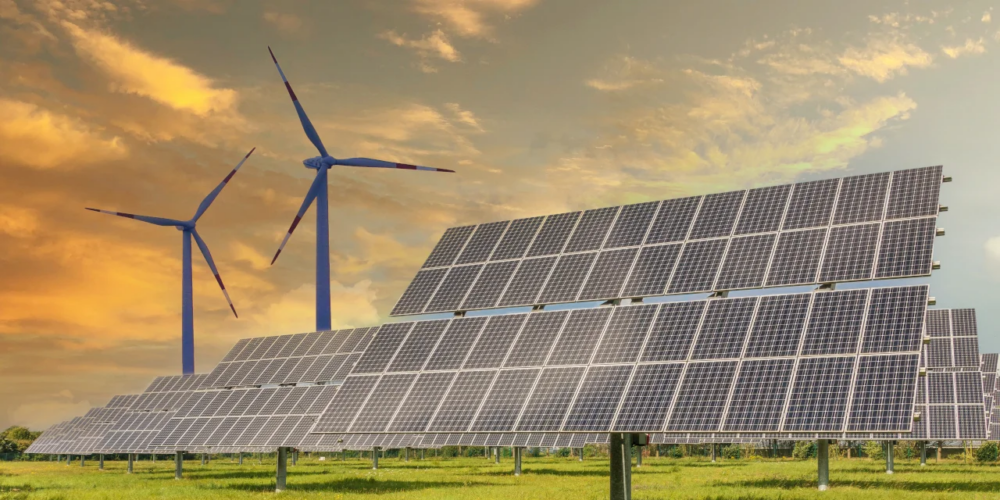Western Europe has been the scene of climate activism for many years. Driven by the reality of our changing climate, activists take desperate action to demand their governments uphold their agreement to reduce their carbon footprint.
In few places was this more evident than in Germany. In the months leading up to January, the tiny municipality of Lützerath was the scene of a continued protest of climate activists fighting the expansion of the local open-pit lignite mine. This culminated in a large standoff with armed police where the protestors were eventually removed by force.
Lignite is a low-grade fossil fuel placing about halfway along in the development between peat and hard coal. Depending on how far along it is in this process when mined, using it as a power-source results in three to seven times more CO2 emissions compared to natural gas. And, just like coal, the burning of lignite results in dangerous air pollution. Coal power is estimated to be responsible for nearly 25 deaths per terawatt-hour of electricity produced. Lignite is a step worse with 34 deaths per TW/h. To put this into perspective: natural gas causes 2.8 deaths per TW/h.
Globally, the burning of fossil fuels leads annually to 8 million preventable deaths. Because lignite contains two-thirds water and impurities, greater quantities are required which is the reason for the giant open-pit mines, destroying the landscape and devouring villages. Lignite is in all aspects as dirty as fuel gets. So how did Germany get to this point?
After watching the devastating effect of the 2011 tsunami on the nuclear reactors in Fukushima, Chancellor Merkel made it her mission to move Germany away from nuclear power. Once providing a third of Germany’s energy, nuclear power has now been scaled down to 6%. This did not mean the end for Germany’s drive towards sustainability. On sunny weekends, solar panels produce half of Germany’s electricity demand. On other days, wind turbines keep the country running. Germany is the first major nation in which renewables have essentially gone beyond just being a green add-on, but form a large and essential part of its grid.
To supplement the variable wind and solar energy and fill in the gaps, gas power was chosen as the base power source for two ideal properties. Namely, it is relatively efficient in regards to carbon produced per KW/h and, more importantly, gas plants can be flicked on and off in mere minutes which is crucial given the unpredictability of the weather.
There is however one complication: Germany has little in the way of natural gas resources, making it dependent on foreign imports, specifically from Russia. With the conflict in Ukraine starting in 2014 it was evident that relying on gas had become too risky, a situation that has only worsened and become impossible with recent sanctions. Thus Germany turned to cheap, locally available fuels and made the switch to lignite.
However, power plants fueled by lignite have a power-up time of 8 hours, making them very impractical for supplementing energy on demand. As a result, the plants are kept running continuously on at least 40% load. This has made Germany the largest lignite producer and consumer in the world. In contrast to its dirt cheap cost, the secondary costs borne by the people are tremendous. German coal and lignite plants were responsible for up to 4,350 premature deaths and 1,800 new cases of chronic bronchitis in 2016, figures that have without doubt have increased since. For the benefit of the people and the future of this world it goes without saying that we can no longer rely on fossil fuels for our power. While Germany’s descent into unsustainability is very specific to its geographic and political situation, it is a task for all nations to avoid similar pitfalls.
In the medium- to long-term, Germany needs to realise that renewables are the future. Despite having on paper one of the lowest deaths per TW/h of all power sources, with the unresolved issue of nuclear waste storage and the Fukushima and Chernobyl disasters fresh in memory, restarting and expanding nuclear power does not seem a suitable option for Germany. However, there are other ways to compensate for the intermittent nature of renewables. Germany can invest in systems of energy storage by using excess power for manufacturing and storing hydrogen, or by pumping water in high reservoirs for use in hydro-power at night. Over the entirety of western Europe, days without sun or wind are rare and occur at most twice a year.
By investing in cross border connections, production and consumption can be spread and evened out. In the shorter term it’s important to realise that the EU’s sanctions on Russia have brought nothing but misery and death to the people in Europe, and Germany’s switch from gas to the climate destroying and lives ending lignite is but one part of that. We can only achieve sustainability by working together on a continental and global scale.






